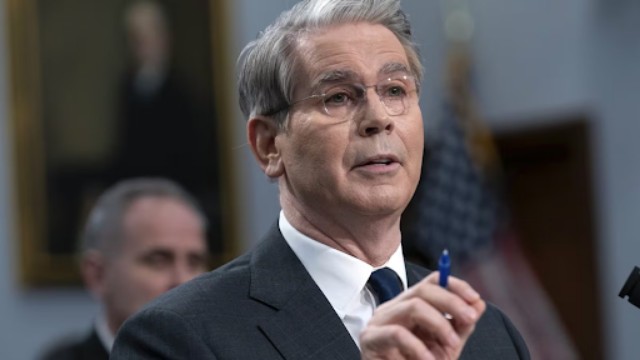
On June 30, 2022, a person is seen entering the JPMorgan Chase & Co. headquarters in Manhattan, New York City, as captured in a file photo by Andrew Kelly for Reuters.
On Thursday, U.S. bank stocks experienced a rise following the Federal Reserve's decision to cut interest rates by 50 basis points. This move eased concerns about rising costs for deposits and the strain on borrowers, giving hope that financial pressures may lessen.
Over the past year, banks have been building up reserves, and preparing for potential defaults, especially within their commercial real estate (CRE) portfolios. A significant reduction in demand for office spaces has put pressure on this sector, increasing concerns over loan performance. Banks are hoping that the recent rate cut will bring some relief by lowering the cost of borrowing and encouraging more loan activity.
Charlie Wise, senior vice president at TransUnion, highlighted that this rate reduction could help banks, especially those holding mortgages and auto loans, as it may improve profit margins temporarily. Following the rate cut, several leading banks saw an uptick in their stock prices. Wells Fargo rose by 3%, while JPMorgan Chase, the largest U.S. bank by assets, saw a 1% increase. Other major institutions, including Citigroup and Bank of America, climbed by 2.6% and 2.3%, respectively. Goldman Sachs surged 3%, and its competitor Morgan Stanley was up 1.3%.
One potential benefit for borrowers is the chance to refinance their loans. Many loans, including auto and mortgage loans, have fixed interest rates, meaning they continue to generate higher returns for banks. However, individuals seeking immediate relief could renegotiate better repayment terms, potentially avoiding defaults. Analysts like Steven Alexopoulos from J.P. Morgan believe this rate cut will help lower borrowing costs and spark increased demand for loans from commercial clients.
Regional banks are also expected to see a larger benefit from this rate reduction, as they hold more exposure to the CRE sector. Institutions such as Valley National, Banc of California, KeyCorp, and Western Alliance each saw their shares rise by nearly 3.8%.
Jefferies analysts noted that the positive response from bank stocks was logical, as the 50 basis point reduction helps alleviate some concerns surrounding high-end credit risks. Lower interest rates typically reduce borrowing costs, making debt payments easier for borrowers with floating-rate loans. Allen Tischler from Moody’s Ratings pointed out that the rate cut could be seen as credit-positive, as it would make loan payments more manageable, helping to improve asset quality.
Despite this optimism, the economic environment remains delicate. Some investors are questioning whether the Federal Reserve has been slow to react to worsening economic conditions. The banking sector has already suffered major setbacks this year, with three prominent institutions collapsing due to rising interest rates that led to significant losses in their investment portfolios.
So far, the KBW Regional Banking Index has risen by 4.4% in 2024, while the S&P 500 benchmark has gained 18%. The S&P 500 Banks Index, which tracks large-cap banks, has increased by 17.5% over the same period.
Jefferies analysts cautioned that while the rate cut offers some relief, questions remain about the overall health of the economy and whether the Fed believes the slowdown is more severe than previously thought.















